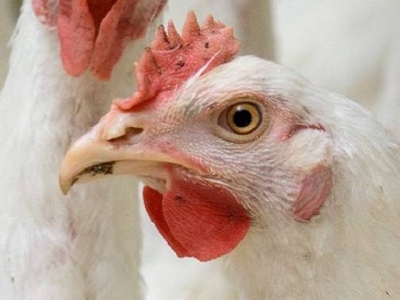The real costs of antibiotic-free, slow-growing broilers

An economist quantified the impact of the current antibiotic-free trend and emerging slower growing broiler movement on the chicken industry and environment.
A future with only antibiotic-free and slow-growing broilers would be harder on the environment and the economy.
In a presentation at the 2017 Chicken Marketing Summit, Dr. Matt Salois, director of global scientific affairs and policy for Elanco, outlined the consequences of farmers moving from conventional practices to no antibiotics ever or slower growing broiler production. Salois spoke on July 17 at the event held in Asheville, North Carolina.
If standardized, the practices would raise the number of birds needed to feed the same number of people, and lead to the consumption of more natural resources and creation of more pollution.
1/ No antibiotics ever
In a period of eight years, the percentage of broilers raised without antibiotics skyrocketed. According to AgriStats data, 42 percent of the U.S. broiler market was raised without antibiotics in May 2017. In April 2010, far less than 5 percent of the market was raised without antibiotics.
Salois said the market already moved far past the proverbial tipping point on antibiotics in broiler production. The question is now how much bigger the market will become, with major food brands and retailers moving toward serving only antibiotic-free (ABF) chicken.
Removing antibiotics from broiler production means higher mortality and greater risk for serious health disorders. Salois said antibiotic-free broilers’ increased mortality ranges between 24 to 25 percent, while grow out time is 3 to 4 percent longer and cycle time is increased by 21 to 29 percent.
If the entire U.S. market moved to ABF, 680 million to 880 million more birds would be needed to provide the same amount of meat. Feeding and watering those birds would require 3,900 to 5,200 square miles of additional land for crop farming and 1.9 billion to 3 billion more gallons of fresh water. The same birds would produce 4.6 million to 6.1 million more tons of manure.
Salois said the shift would also add $2.9 billion to $3.8 billion in added costs to the chicken industry. According to AgriStats data, the volume of ABF chicken produced increased to 43 percent in 2017 from less than 10 percent in 2015. But, at the same time the volume of ABF meat sold stayed relatively flat and is only at about 5 to 6 percent now. U.S. consumers prefer white, boneless breast meat and the demand for ABF dark meat is weak both in the country and its export markets. The price premium for ABF breast meat compared with conventional breast meat shrank as the market continues to absorb a surplus supply of ABF meat.
2/ Slower growing broilers
A new target for animal welfare activists is the growth rate of broiler hens. The activists postulate faster growth rates lead to worse animal health and therefore worse welfare. This is untrue.
In fact, Salois said, statistics covering broiler performance between 1925 and 2016 shows that as birds gained weight faster during the decades of selective breeding, mortality actually dropped. New research, studying how broilers performed in a production agriculture environment between 1995 and 2015 shows that the presence and severity of leg injuries like rickets and tibial dyschondroplasia decreased while weight gain and growth rates increased.
Just like ABF, Salois said slower growing broilers becoming an industry standard will lead to increased need for feed, land and water, increased manure output and increased production costs. Moreover, if only a third of the U.S. market transitioned to slower growing birds, there would be 5.5 billion less pounds of meat on the market.
3/ Potential solutions for the industry
One way to control the consequences of these trends is to make a direct connection with consumers from a positive standpoint. The consumer wants a transparent food chain, with a clear, authentic and positive story. Instead, they deal with an obscure food supply marked by confusing labels, inaccurate information from unreliable sources and a food market defined by what’s not in it rather than what it contains.
The opportunity is out there for animal agriculture companies to give people what they want: quality protein raised with good animal welfare in a sustainable way at a better value price than the competition.
In terms of setting goals for sustainability and welfare, Salois said animal agriculture must focus on the idea of better general animal welfare rather than focusing on one specific idea like ABF production or slower growth rates. Animal welfare means having a sincere respect for the animals, providing good health, nutrition and housing and allowing for appropriate behaviors based on standards defined by scientific research. Welfare considerations must be in balance with other key priorities like sustainability and economic availability to ensure a successful program.
Có thể bạn quan tâm
 8 broiler feed tips to select the right fats, oils
8 broiler feed tips to select the right fats, oils Very young broilers cannot utilize all fats with the same efficiency as older broilers, whereas not all fats and oils provide the same amount of energy.
 Great layer performance starts in the pullet house
Great layer performance starts in the pullet house The management provided to a flock before the start of lay can mean the difference of 10 or more eggs per hen through 80 weeks.
 8 antibiotic-free broiler production do’s and don’ts
8 antibiotic-free broiler production do’s and don’ts Dr. Charles Hofacre covered what poultry growers should and should not do when moving to an antibiotic-free program. He also discussed a number of antibiotic